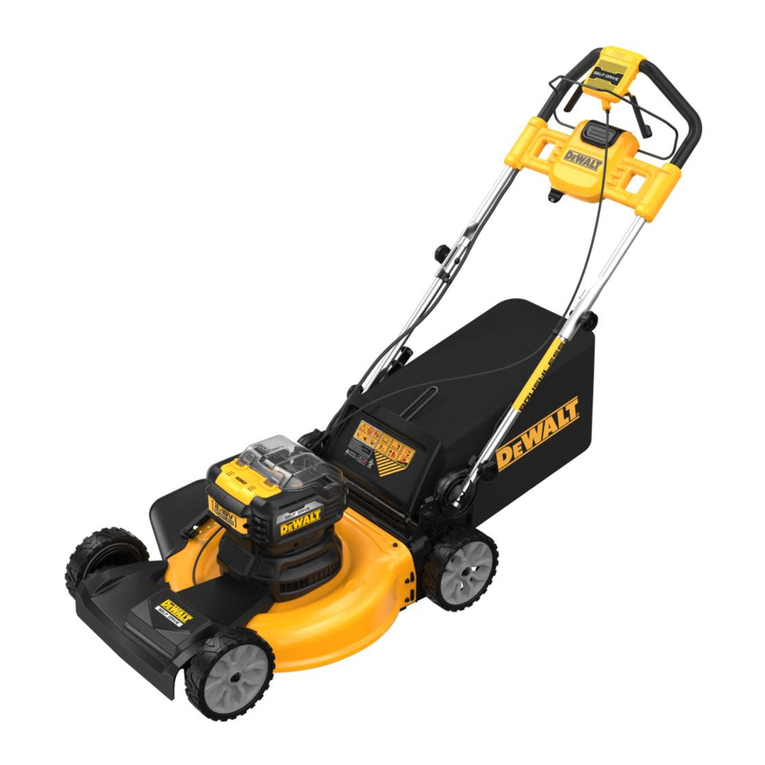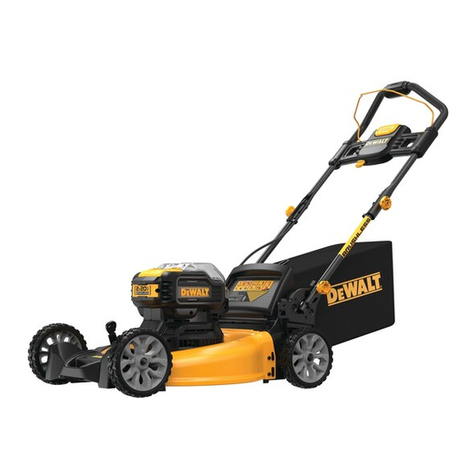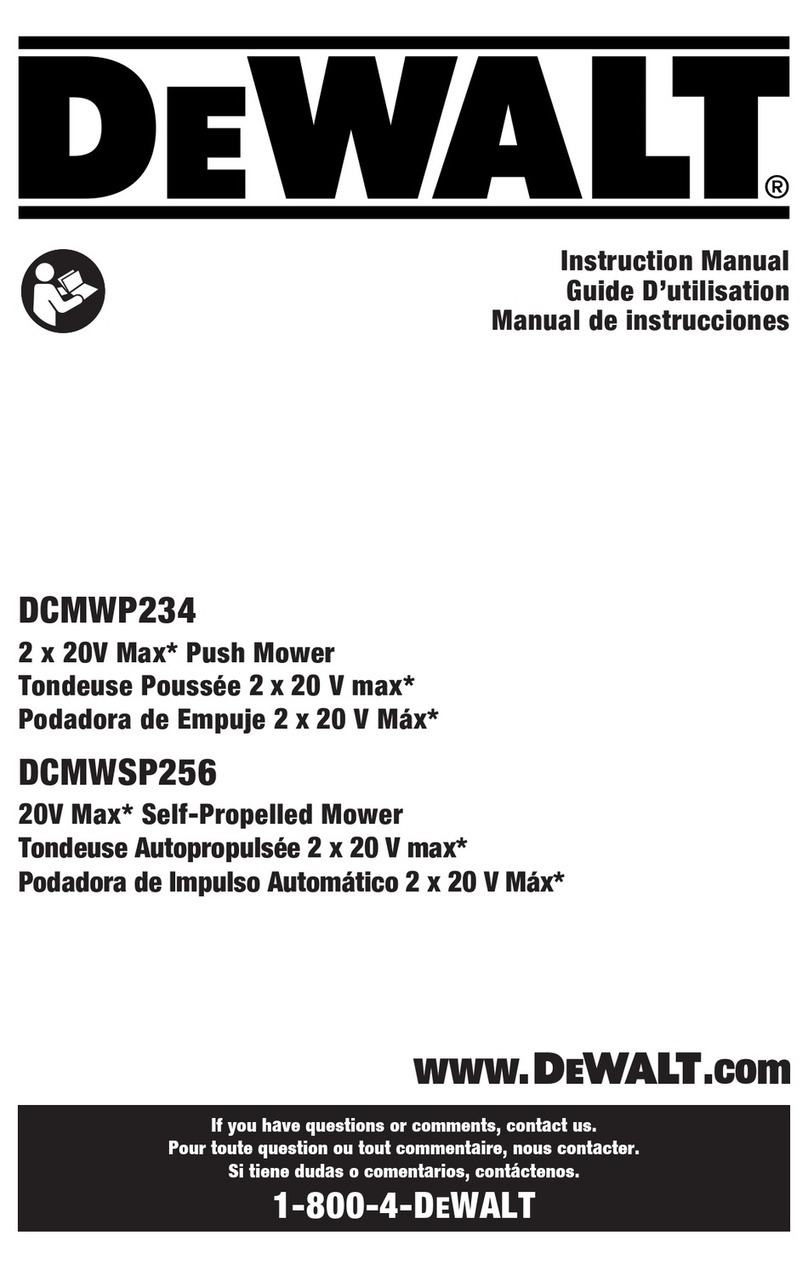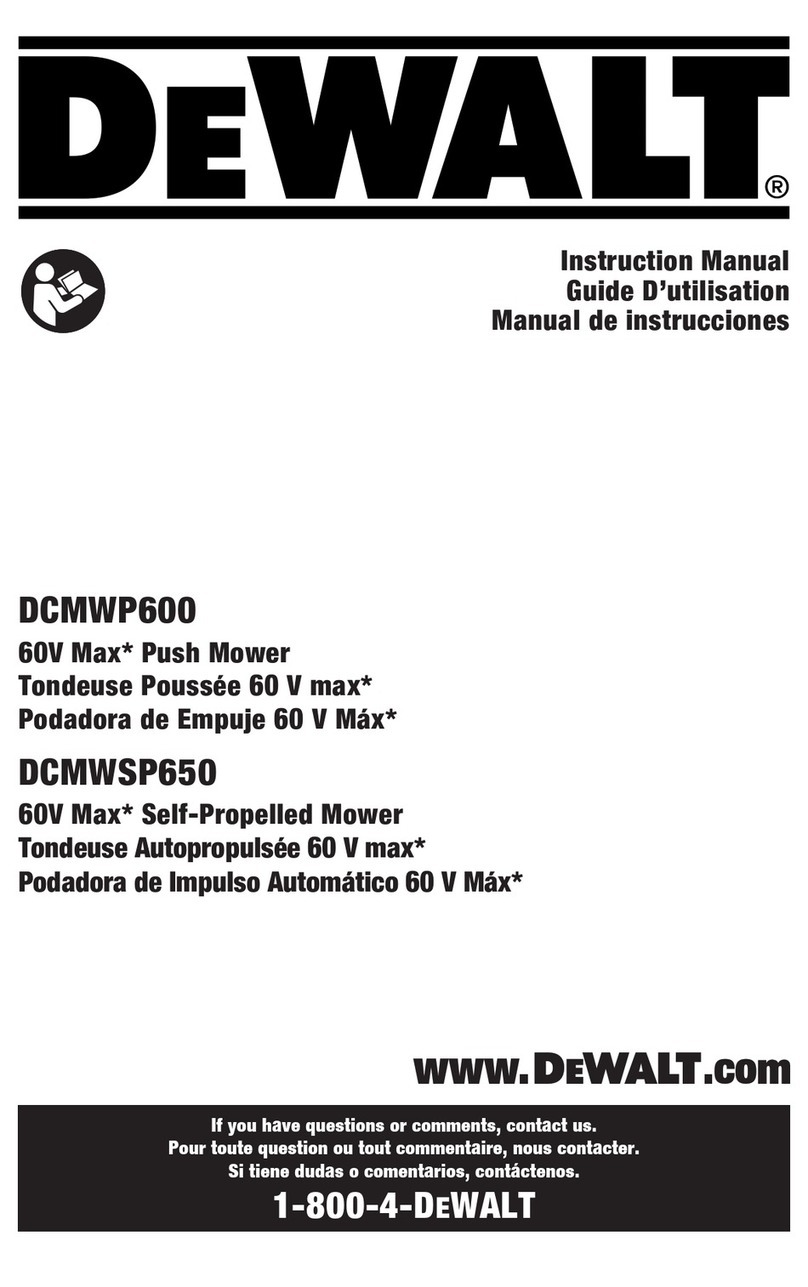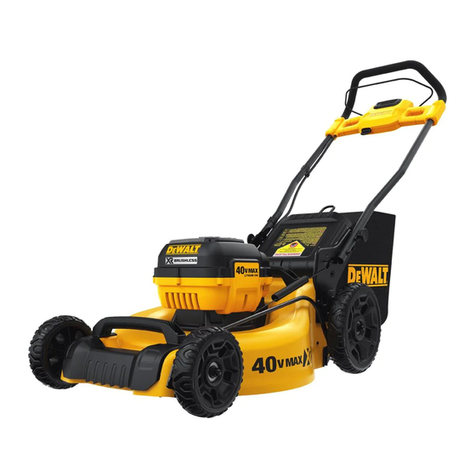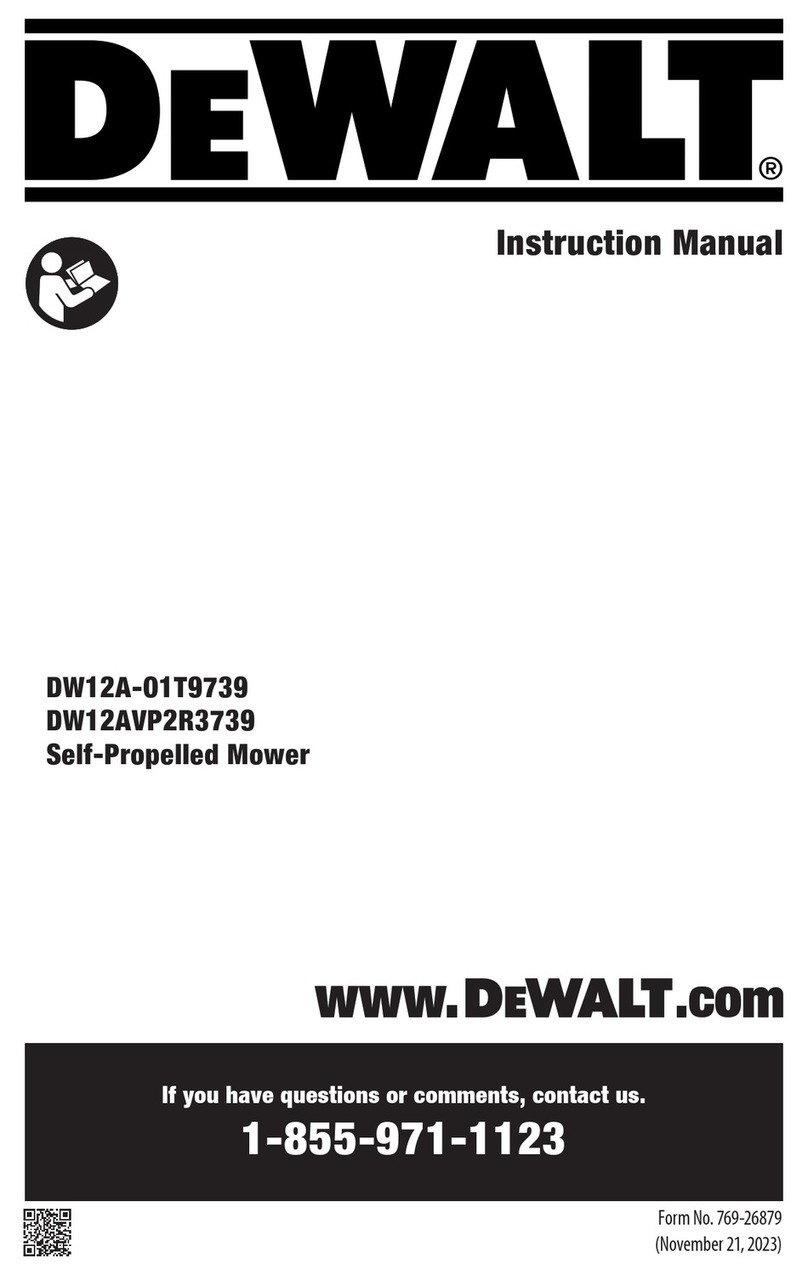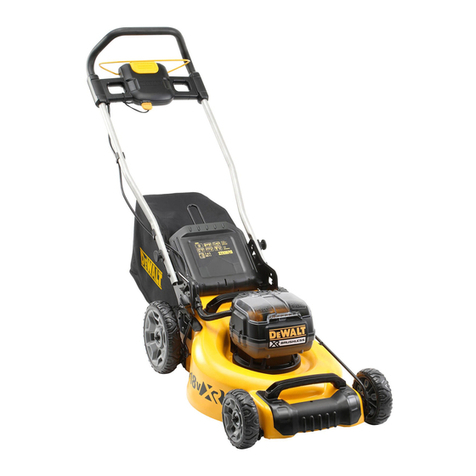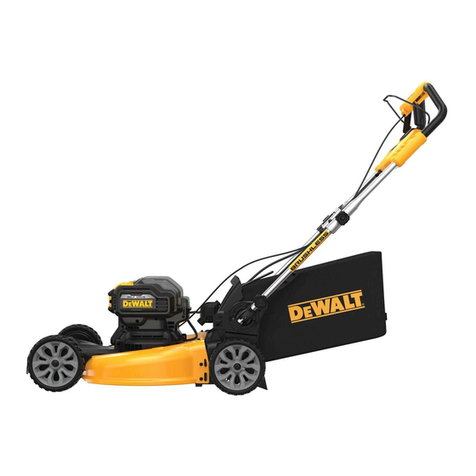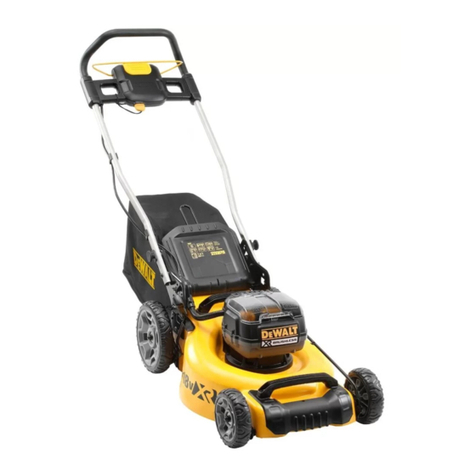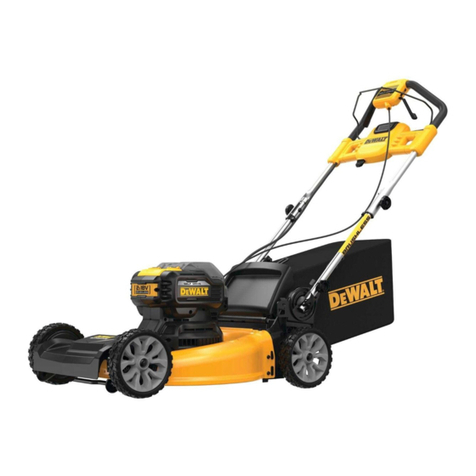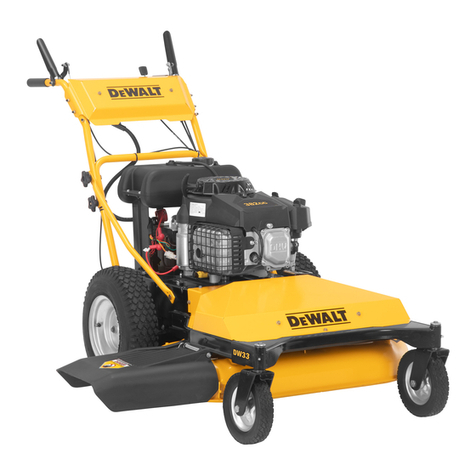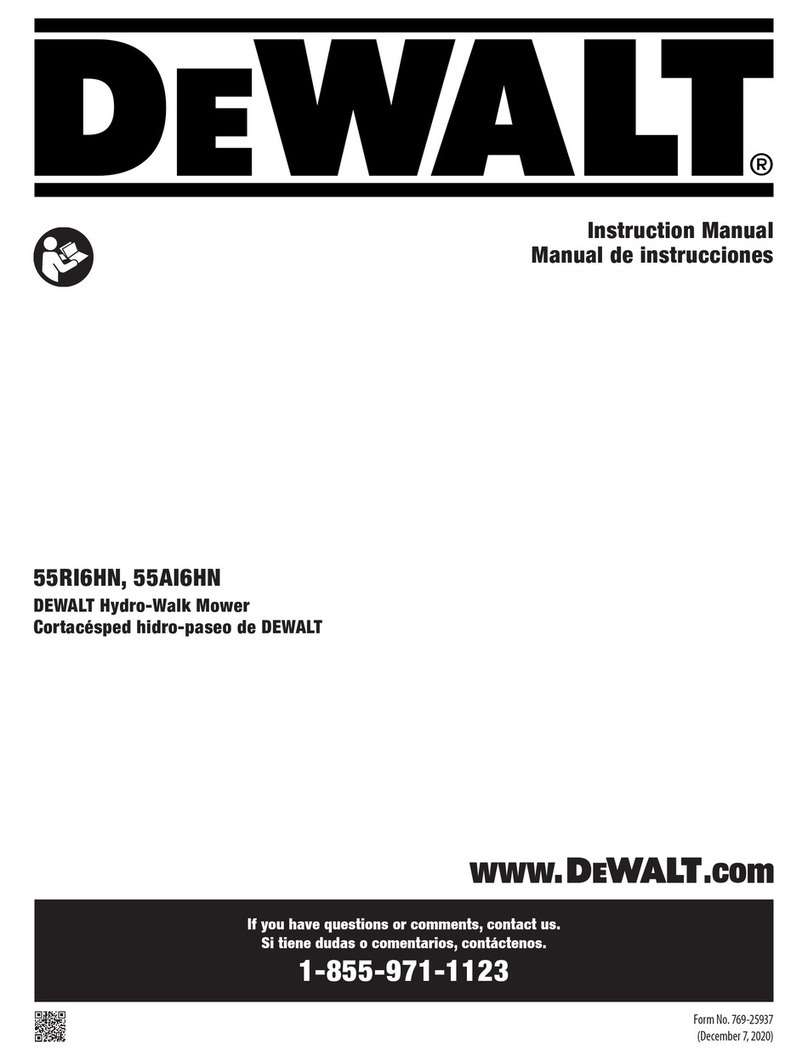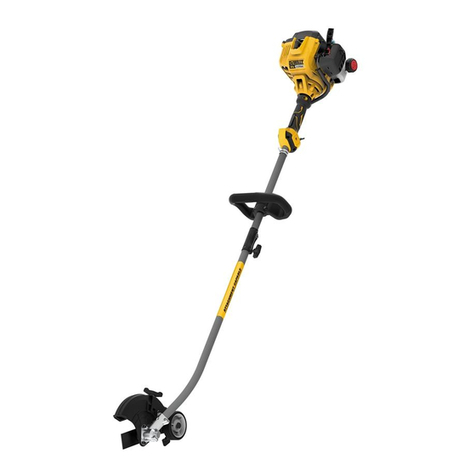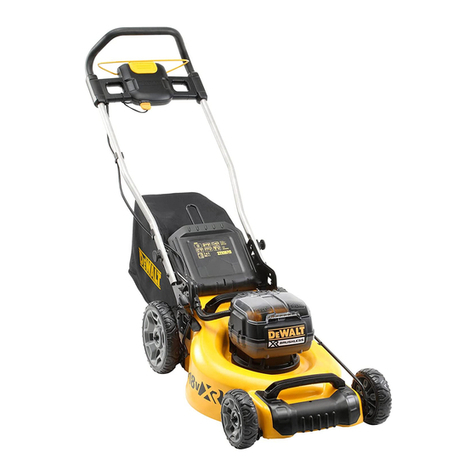
ENGLISH
4
DANGER: This machine was built to be operated according to the safe
operation practices in this manual. As with any type of power equipment,
carelessness or error on the part of the operator can result in serious injury.
This machine is capable of amputating hands and feet and throwing
objects. Failure to observe the following safety instructions could result in
serious injury or death.
WARNING: CALIFORNIA PROPOSITION 65 - Engine exhaust, some of its
constituents, and certain vehicle components contain or emit chemicals
known to the State of California to cause cancer and birth defects or other
reproductive harm.
Battery posts, terminals, and related accessories contain lead and lead
compounds, chemicals known to the State of California to cause cancer and
reproductive harm. Wash hands after handling.
WARNING: This symbol points out important safety instructions which,
if not followed, could endanger the personal safety and/or property
of yourself and others. Read and follow all instructions in this manual
before attempting to operate this machine. Failure to comply with these
instructions may result in personal injury. When you see this symbol. HEED
ITS WARNING!
Training
1. Only allow operators who are responsible, trained, familiar with the instructions, and
physically capable to operate the mower.
2. Be familiar with the areas in which the mower is to be used. Walk all areas to be
mowed, evaluate slopes and other terrain and look for obstacles to be avoided to
ensure safe operation before mowing.
3. See the Practice Operation section of this manual for further instructions.
General Operation
1. Be familiar with all controls and their proper operation. Know how to stop the mower
and disengage the controls quickly.
2. Do not allow anyone to operate or maintain this mower who has not read the
manual. Never permit children under the age of 16 to operate this mower.
3. Do not remove any shields, guards, labels or safety devices. If a shield, guard, label or
safety device is damaged or does not function, repair or replace it before operating
the mower.
4. To help avoid blade contact or a thrown object injury, keep bystanders, helpers,
children and pets at least 75 feet (22.9 meters) from the mower while it is in
operation. Stop mower if anyone enters the area.
5. Thoroughly inspect the area where the equipment is to be used. Remove all stones,
sticks, wire, bones, toys, and other foreign objects that could be picked up and thrown
by the blade(s).Thrown objects can cause serious personal injury.
6. Evaluate the terrain to determine what accessories and attachments are needed to
properly and safely perform the job. Only use accessories and attachments approved
by the mower manufacturer.
7. Plan mowing pattern to avoid discharge of material toward roads, sidewalks,
bystanders and the like. Also, avoid discharging material against a wall or obstruction
which may cause discharged material to ricochet back toward the operator.
8. Always wear appropriate clothing and personal protective equipment (e.g. safety
glasses, long pants, gloves, hearing protection , safety shoes, hard hat) when
operating or maintaining this mower. Long hair, loose fitting clothing or jewelry may
get entangled in moving parts. Follow all federal, state and local guidelines regarding
the use of personal protective equipment.
9. For extended use of this product, hearing protection is recommended.
10. Be aware of the mower and attachment discharge direction and do not point it
at anyone. Do not operate the mower without the discharge cover or entire grass
catcher in its proper place.
11. Do not put hands or feet near rotating parts or under the cutting deck. Contact with
the blade(s) can amputate hands and feet.
12. A missing or damaged discharge cover can cause blade contact or thrown
object injuries.
13. Stop the blade(s) when crossing gravel drives, walks, or roads and while not
cutting grass.
14. Watch for traffic when operating near or crossing roadways.This mower is not
intended for use on any public roadway.
15. Do not operate the mower while under the influence of alcohol or drugs.
16. Mow only in daylight or good artificial light.
17. Never carry passengers.
18. Back up slowly. Always look down and behind before and while backing to avoid a
back-over accident.
19. Slow down before turning. Operate the mower smoothly. Avoid erratic operation and
excessive speed. Be aware of the direction of travel to avoid accidents.
20. Disengage blade(s), set parking brake, stop engine and wait until the blade(s) come
to a complete stop before removing grass catcher, emptying grass, unclogging chute,
removing any grass or debris, or making any adjustments.
21. Never leave a running mower unattended. Always stop on level ground, turn off
blade(s), place drive speed control levers in neutral, set parking brake, stop engine
and remove key before leaving the operator position.
22. Use extra care when loading or unloading the mower on a trailer. The mower should
not be driven on unstable, unsecured or inadequate ramps because the mower could
tip over causing serious personal injury.
23. Check overhead clearances carefully before driving under low hanging tree branches,
wires, door openings etc., where the operator may be struck which could result in
serious injury.
24. Muffler and engine become hot and can cause a burn. Do not touch.
25. Disengage the blades, set the parking brake to the‘on’position and make sure the
speed control levers are in the neutral position before attempting to start the engine.
Only start the engine from the operator’s position.
26. Do not attempt to mow unusually tall, dry grass (e.g., pasture) or piles of dry leaves.
Dry grass or leaves may contact the engine exhaust and/or build up on the mower
deck presenting a potential fire hazard.
27. Do not stop or park the mower over dry leaves, grass, debris or other
combustible material.
28. Never attempt to operate the mower without the mowing deck attached; the mower
could tip over.
29. Keep the mower and especially the engine exhaust system and hydraulic
components clean and free of grease, grass and leaves to reduce the potential for
overheating and fire.
30. Allow the mower to cool at least 5 minutes before storing.
31. Use only accessories and attachments approved for this mower by the mower
manufacturer. Read, understand and follow all instructions provided with the
approved accessory or attachment.
32. Data indicates that operators, age 65 years and above, are involved in a large
percentage of riding mower-related injuries. Operators should evaluate their ability
to operate this mower safely enough to protect themselves and others from serious
injury.
33. Do not operate or start mower if there is fuel or oil leaks; repair immediately.
34. When looking for oil leaks, never run hands over hydraulic hoses, lines or fittings.
Never tighten or adjust hydraulic hoses, lines or fittings while the system is under
pressure. If high-pressure oil penetrates the skin seek immediate medical attention or
gangrene and permanent damage may result. Do not check for hydraulic leaks with
hands, use paper or cardboard instead.Wear gloves and safety glasses when checking
for leaks.
35. Do not operate mowers that have been damaged or have not been properly
maintained. If the mower has been damaged, then have it repaired.
36. When operating this mower in the forward direction, do not allow the speed control
levers to return to the neutral position on their own. Always operate them smoothly
and avoid any sudden movements of the levers when starting or stopping.
37. If situations occur which are not covered in this manual use care and good
judgement. Contact the customer service representative for assistance.
Slope Operation
Slopes are a major factor related to loss of control and tip-over accidents that can result in
severe injury or death. All slopes require extra caution. If you cannot back up the slope or
if you feel uneasy on it, do not mow it or drive on the slope.
For your safety, use the slope gauge included as part of this manual to measure slopes
before operating this mower on a sloped or hilly area. If the slope is greater than 15
degrees as shown on the slope gauge, do not operate this mower on that area or serious
injury could result.
Do:
1. Mow across slopes, not up and down. Exercise extreme caution when changing
direction on slopes.
2. Watch for holes, ruts, bumps, rocks, or other hidden objects. Uneven terrain could
overturn the mower. Tall grass can hide obstacles.
3. Use slow speed. Choose a low enough speed so that the mower will not have to
stop while on the slope. Avoid starting or stopping on a slope. If the tires are unable
to maintain traction, disengage the blades and proceed slowly and carefully straight
down the slope.
SAFE OPERATION PRACTICES
